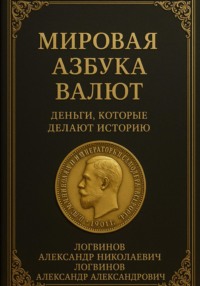
Полная версия
Deduction: How to See More Than Others

Александр Логвинов
Deduction: How to See More Than Others
Introduction
The answer lies in a special way of thinking – deduction.Why do some people notice what others pass by without a blink? What allows an experienced detective to unravel a mystery from the tiniest details invisible to most?
The deductive method works like a magical magnifying glass, revealing the unseen behind the obvious. But in truth, it’s not magic at all – it’s a skill based on logic, observation, and the ability to draw conclusions. And the good news is: anyone can learn it.
Imagine being able to think like Sherlock Holmes – to spot hidden patterns and causes where others see only chaos. This book is a vivid journey into the world of deduction. We’ll explore what deductive thinking is and how it works, tracing its use from everyday life to science, from criminology to cutting-edge technology. You’ll encounter stories from real life and fiction, examples from the past and present, a touch of humor, and plenty of insights.
Inside, you’ll find practical exercises, logic puzzles, and case studies to analyze – a kind of mental gym. Don’t worry, no special background is needed: everything is explained clearly and simply, without dull formulas. Yet we won’t oversimplify the essence – you’ll truly understand how deduction works and why it’s such a powerful tool of thought.
Then open the first chapter. The game is on!Are you ready to see the world through new eyes – the eyes of someone who sees more than others?
Then open the first chapter. The game is on!
Chapter 1. The Mystery of Deduction: What Is It Really?
If we strip away the scientific jargon, deduction can be described simply as the ability to logically derive specific conclusions from general known principles. More formally, deductive reasoning is a way of thinking in which a set of true premises leads logically to a new conclusion. Unlike guesses or intuition, a conclusion reached through deduction is guaranteed to be true—provided, of course, that the premises themselves are true and the reasoning is flawless.What exactly hides behind the intriguing word deduction?
For example, if you try three cookies from a jar and all of them have chocolate chips, you might reasonably assume (inductively) that all the cookies in the jar are chocolate chip cookies. Plausible – though not guaranteed. There could still be an oatmeal one hiding at the bottom.To understand it better, it helps to compare deduction with its “relatives” – induction and abduction. If deduction moves from the general to the specific, then induction goes the opposite way – from specific observations to a general rule. With induction, we collect many cases, look for recurring patterns, and then formulate a general principle. Such a conclusion is not 100% certain, but it’s considered probable.
Imagine you see cookie crumbs on the table and your younger brother’s face smeared with chocolate. The logical explanation (abduction) is that he secretly ate the cookies. You didn’t witness it directly, but by piecing together the clues, you arrive at a reasonable conclusion.Abduction, meanwhile, takes a third path: it seeks the most likely explanation for a limited set of observations. In plain terms, abduction is the art of making the best possible guess based on available evidence.
Конец ознакомительного фрагмента.
Текст предоставлен ООО «Литрес».
Прочитайте эту книгу целиком, купив полную легальную версию на Литрес.
Безопасно оплатить книгу можно банковской картой Visa, MasterCard, Maestro, со счета мобильного телефона, с платежного терминала, в салоне МТС или Связной, через PayPal, WebMoney, Яндекс.Деньги, QIWI Кошелек, бонусными картами или другим удобным Вам способом.














